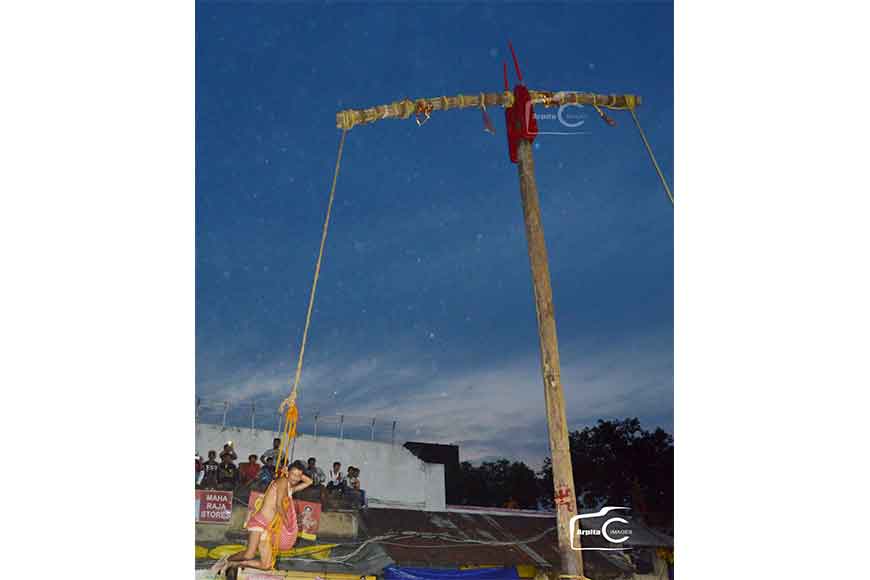Bengal’s intriguing ‘Charak’ festival and ‘Banfora’ ritual
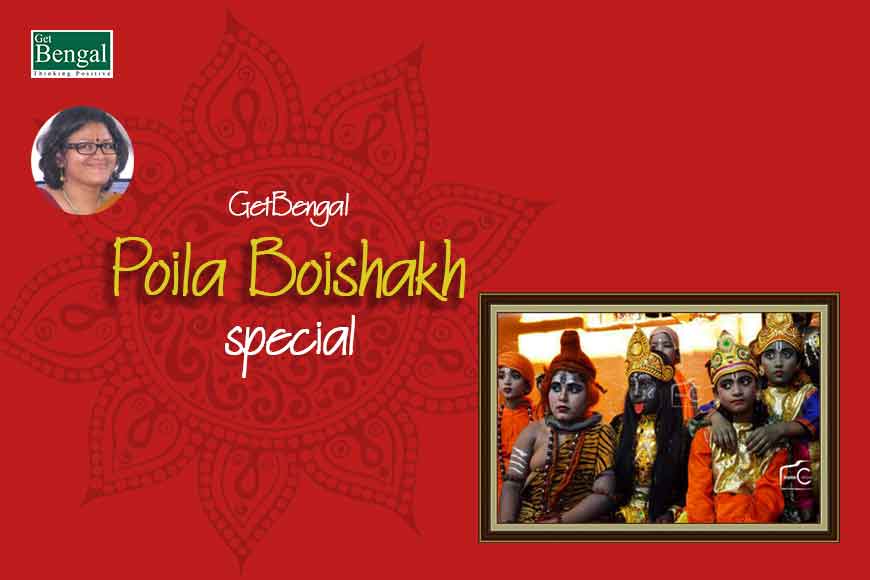
The word ‘Charak’ is derived from chakra or charaka (Chakra> Chakkar > Charak), which means a circle, and is used to signify moving or swinging in a circular direction. Charaka Sanyasa implies leaving off worldly business, living abstemiously, observing austerities, for the propitiation of Shiva. According to Khitiprasad Chattapadhya, the Charak festival is associated with the Vernal Equinox. The ceremony begins a week before the end of the month of Chaitra (March-April) and culminates on the last day of that month, which also marks the closing of the year, in Bengal. This date is known as the day of crossing of the equator (mahavisuba sangkranti). It comes after the day of the vernal equinox by about 3 weeks. The end of the year in Bengal appears in course of time to have lagged behind to this extent. It is believed on this date, King Vana in order to please Mahadeva, drew blood from his body as an offering and propitiated him by dances along with his friends.
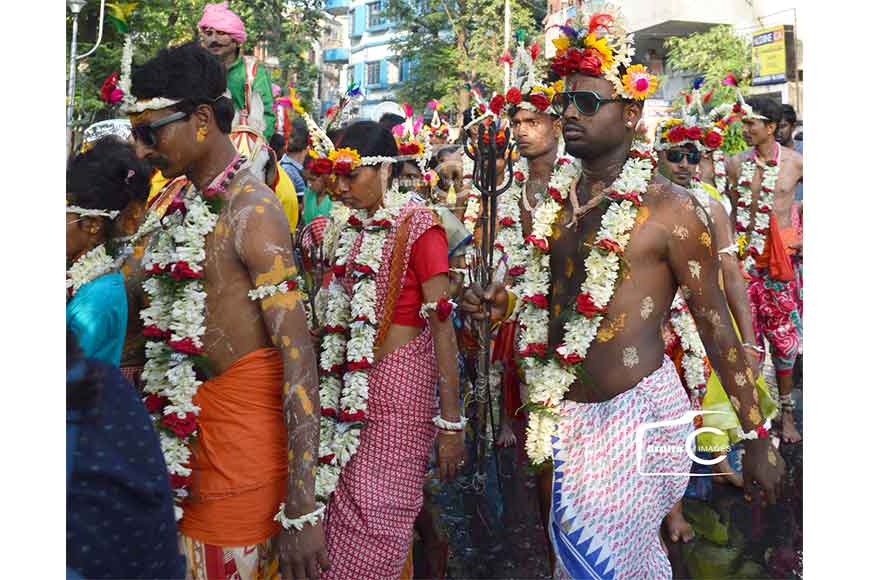
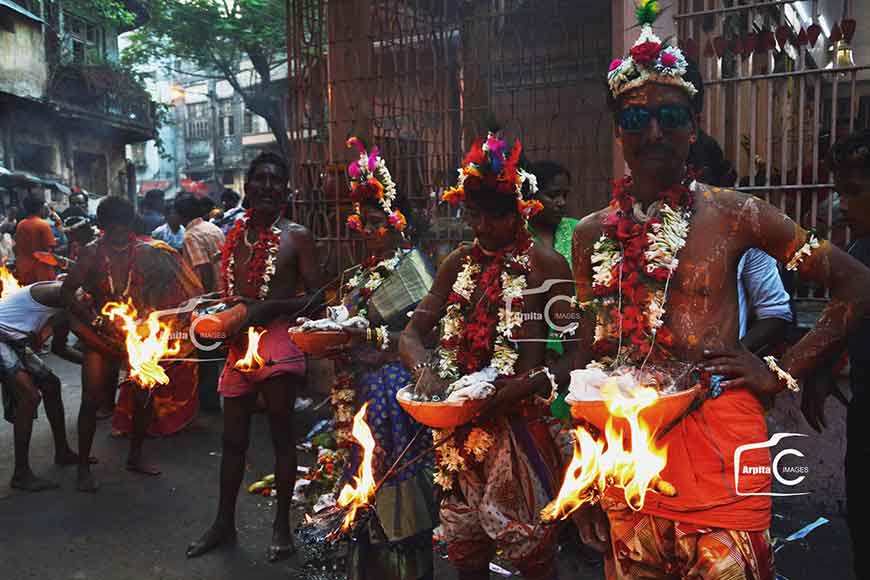
“Om odam, om pibam” (means ‘we eat, we drink’)
Food was the ultimate goal of the ancient people and this song reflects the urge to gather food and drinks. Agriculture was the primary bonding force in those days. All religious festivals were evolving around agriculture. Ancient people believed they could evoke the fertility of the land through singing and dancing and through performing magical power or witchcraft. By doing these they could please the supreme power who gave them good quality food in a desirable quantity. Unanimously it is believed that the basis of Gajon, Charak and Neelpuja, is this belief of the ancient agrarian society with a mixture of fertility cult. The objective behind this festival is to regulate the heat of the sun by magical power or by what is known as “Sympathetic Magic” and to create a favourable climate for agriculture. Even today it is believed that by witchcraft, tantric rituals, self hurting, fasting etc. they can increase the fertility of the land, ensure good harvest and also ensure good rain for the next agricultural season.
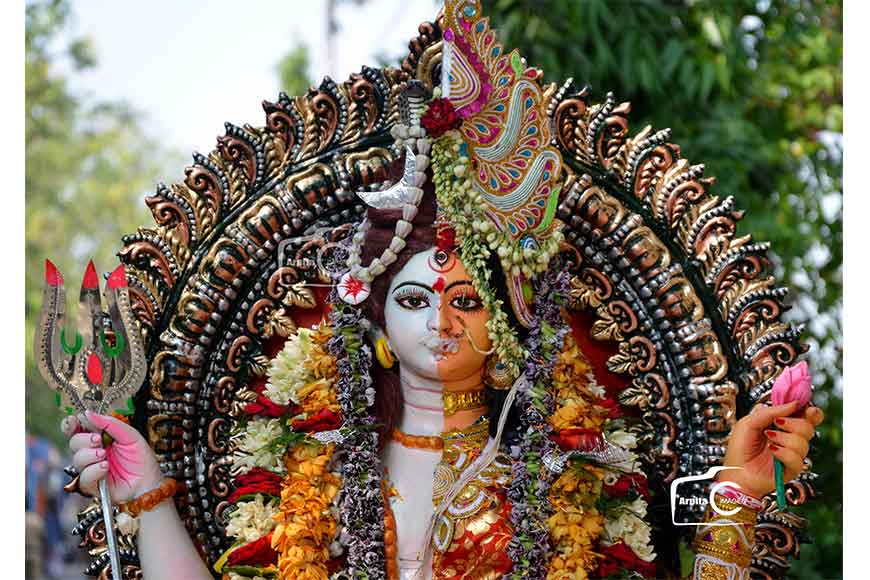
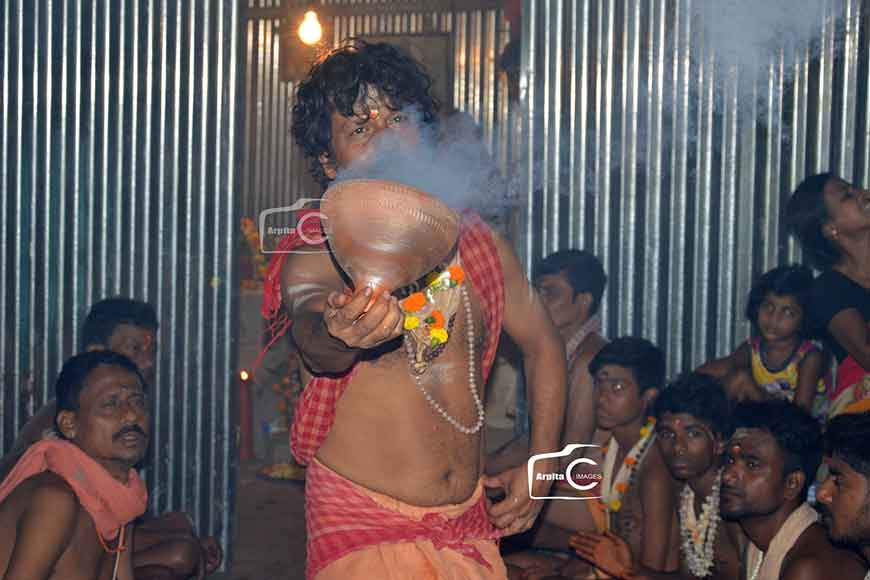
The tradition of Charak is all about worshipping the Charak tree. The Charak tree and the Chakkar or the circular movement of the Gajon Sanyasis around the Charak tree resembles the circular movement around the sun. In one way it signifies the union of the forces of sun and earth. A straight trunk of a Garjan tree (Dipterocarpus turbinatus) without any roots or branches is used as a Charak tree. The height of the trunk is around 30-40 feet. The tree is worshipped by priests and then erected inside a ditch and is balanced by bamboos. Then the Sanyasis perform their penance acts. After these acts the tree is duly immersed in a river or a pond. The Charak Sanyasis bring it back to the puja ground on the day of Charaka. The Charak tree is believed to be the abode of Ardhanarishwar (composite form of the Shiva and Parvati). An idol or a mask of Ardhanarishwar or Harakali is attached to the top of the trunk before the worship and hoisting it up straight on the ground. However, the predominant concept is that of Ardhanarishwar –which symbolises Purush (Man) and Prakriti (Nature) in the deity. A deeper meaning is that the Human life coexists with nature and nature and human beings are complementary to each other. During hosting the Charak tree the Bhaktas cry a slogan- “Parvati Parannath boho” means ‘Parvati please accept your husband’. Definitely it is a sex symbol and it is related to the beliefs of the fertility cult. Here the Charak tree symbolises Shiva and the land symbolises Parvati.
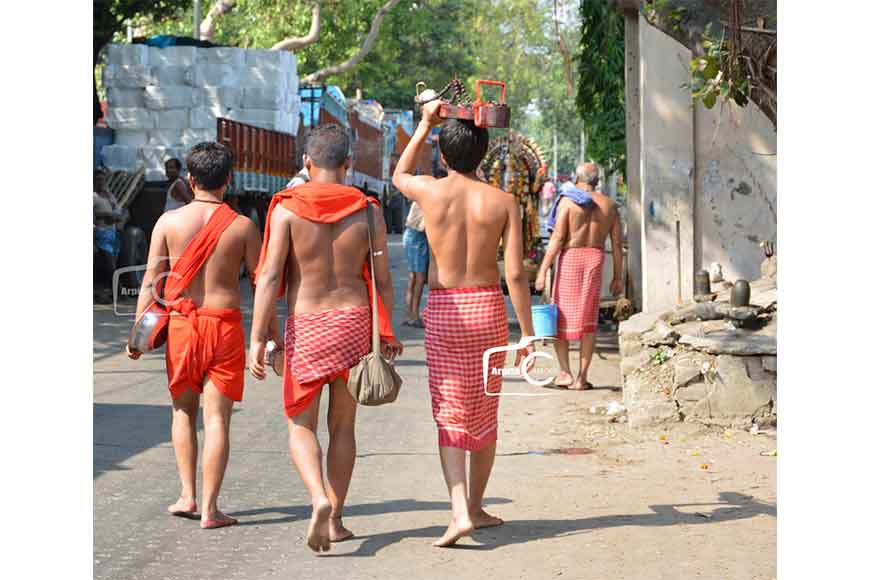
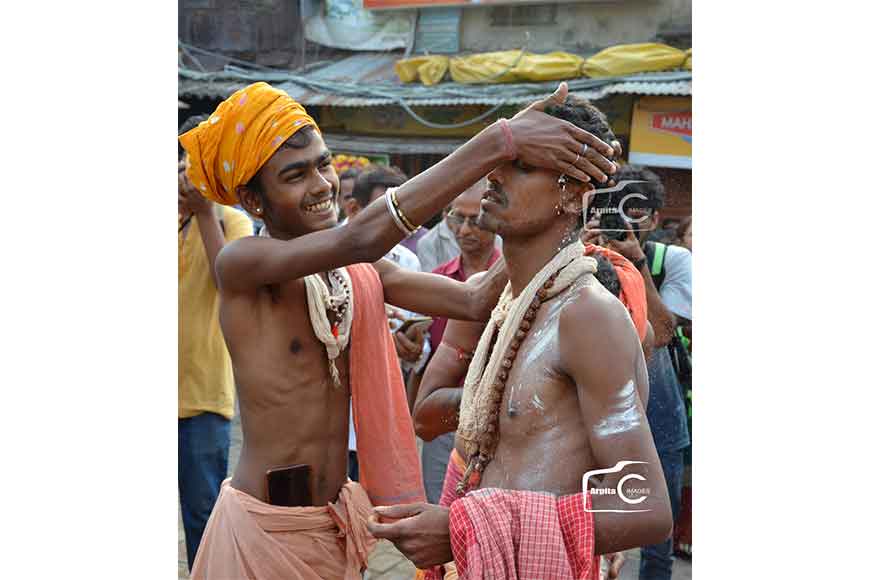
In earlier days during Charak the Gajon sanyasis pierced sharp hooks (fishing hooks) on their bodies and then hanged themselves with the help of a rope from the Charak trees and this helped them to move in a circular motion around the Charak tree. This ritual is known as ‘Ban fora’. Some of them got their tongue pierced with multiple needles and moved around the Charak tree. But during the British era the Christian Missionaries found this ritual inhuman and they were first who protested against this ritual. In 1856-57 they applied to the Government to stop this ritual. The Lieutenant Governor at that time, J.P. Grant started an enquiry with the help of the commissioners and after the enquiry he came to a decision that the local Zamindars would approach to the locals to stop this particular ritual. But this attempt was not fruitful enough. After discussing with the Hindu leaders and with the permission of the British Indian Association, lieutenant governor Sir Beadon on 15th March, 1865 announced this ritual illegal and if anyone found practising it, would be punished under law. From then the Gajon sanyasis tie themselves with the help of a ‘Gamcha’ and hang them from the Charak tree and rotate. But even today this ‘Banfora’ ritual is practised in the name of religion.
